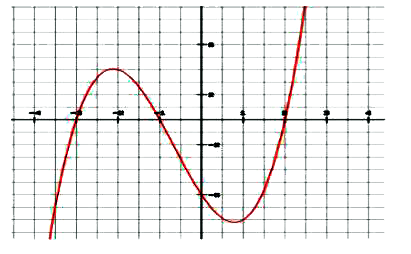When you play soccer,the motion described by the football is

Curvilinear
Circular
Oscillatory
Non-uniform
Step by step video & image solution for When you play soccer,the motion described by the football is by Physics experts to help you in doubts & scoring excellent marks in Class 7 exams.
Updated on:21/07/2023Topper's Solved these Questions
- MOTIONBOOK - BEIITIANSCHAPTER - MOTIONEXERCISE - CONCEPTIVE WORKSHEET
20 Videos
- MOTIONBOOK - BEIITIANSCHAPTER - MOTIONEXERCISE - SUMMATIVE WORKSHEET
2 Videos
- MEASUREMENTBOOK - BEIITIANSCHAPTER - MEASUREMENTEXERCISE - IIT JEE WORKSHEET (IV INTEGER TYPE)
1 Videos
- SOUNDBOOK - BEIITIANSCHAPTER - SOUNDEXERCISE - IIT JEE Worksheet (V. Matrix Matching)
5 Videos
Similar Questions
The motion described by a football ?
View SolutionA statement group of statements is given followed by some conclusions. Without resolving anything yourself, choose the conclusion which logically follows from the given statement.
Statement: In a class, three fourth of the boys play football, one-half play cricket, one-fourth of those who play cricket do not play football.
Conclusions:
(a) Two-third of the boys play only football.
(b) One-fourth of the boys play neither cricket nor football.
(c) One-third of the boys play neither cricket nor football.
(d) One eighth of the boys play neither cricket nor football.
(e) Two fifth of the boys play only football.
View Solution
Knowledge Check
In a class of 60 students, 40 students play cricket and only 30 students play football . The number of students who can play both cricket and football is
A10B23C33D34In a school, 50% students play cricket and 40% play football. If 10% of students play both the games, then what percent of students play neither cricket nor football?
(a)10%
(b)15%
(c)20%
(d)25%A10%B15%C20%D25%Out of 450 students of a school 325 play football, 175 play cricket and 50 neither play foot ball nor cricket. How many students play both football and cricket ?
A50B100C75D225
Directions (Questions 519 to 523): These questions are based on the following information: Children in a class play only one or two or all of the three games – badminton, football and cricket. 5 children play only cricket, 8 children play only football and 7 children play only badminton. 3 children play only two games – badminton and football, 4 children play only 2 games cricket and football, and another 4 children play only two games – badminton and cricket. 2 children play all the three games. How many children play football as well as cricket? (a) 4 (b) 6 (c) 7 (d) 15 (e) None of these
View SolutionDescribe the sequence of terms, when you are going to describe the gynoecium of any problem.
View SolutionIn a group of children, 35 play football out of which 20 play football only, 22 play hockey, 25 play cricket out of which 11 play cricket only. Out of these 7 play cricket and football but not hockey, 3 play football and hockey but not cricket and 12 play football and cricket both.
How many play all the three games ? How many play cricket and hockey but not football, how many play hockey only? What is the total number of children in the group?
View SolutionBasketball and soccer are played with a spherical ball. Even though an athlete dribbles the ball in both sports, a basketball player uses his hands and a soccer player uses his feet. Usually, soccer is played outdoors on a large field and basketball is played indoor on a court made out of wood. The projectile (path traced) of soccer ball and basketball are in the form of parabola representing quadratic polynomial.

Observe the following graph and answer

In the above graph, how many zeroes are there for the polynomial?
View SolutionBasketball and soccer are played with a spherical ball. Even though an athlete dribbles the ball in both sports, a basketball player uses his hands and a soccer player uses his feet. Usually, soccer is played outdoors on a large field and basketball is played indoor on a court made out of wood. The projectile (path traced) of soccer ball and basketball are in the form of parabola representing quadratic polynomial.

The shape of the path traced shown is
View Solution
